From Buffalo Bill’s boyhood home and hunting lodge to a showplace hotel named for the legendary showman’s daughter, buildings that line Cody’s Sheridan Avenue – the northwestern Wyoming town’s main street – and dot the vast northwestern Wyoming landscape illustrate the destination’s storied past.
Cody Yellowstone is known for its outdoor recreation, wildlife, parks (including the world’s first national park), colorful characters and historic sites that all tell fascinating stories.
And then there are the various buildings in the region that played an important role in the development of this classic Western destination.
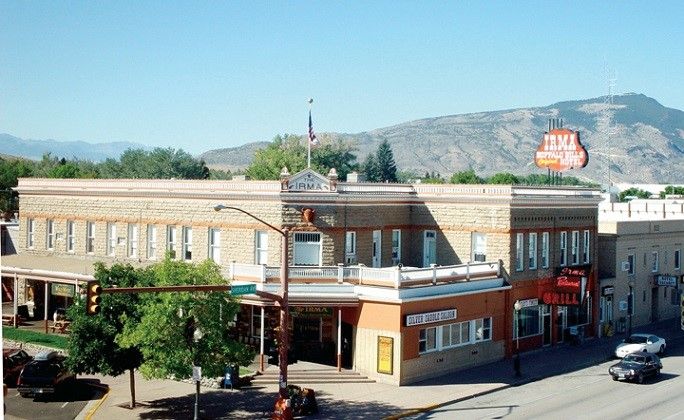
A great way to learn about the town’s many historic buildings is to download Cody Yellowstone’s free TravelStorys Historic Downtown Cody walking tour. The GPS-controlled audio tour includes details about many of the town’s famous buildings.
Here are some of the famous structures visitors will find in Cody Yellowstone.
Buffalo Bill’s Boyhood Home. Built by Isaac Cody, the father of Buffalo Bill Cody in 1841 at LeClaire, Iowa, the house was purchased as a tourist attraction by the Chicago, Burlington and Quincy Railroad and was moved to Cody in 1933. The house can be seen at the Buffalo Bill Center of the West.
Buffalo Bill’s hunting lodge, Pahaska Teepee. Located just outside the East entrance to Yellowstone National Park, Cody brought his hunting pals – including Theodore Roosevelt and the Prince of Monaco – to this rustic lodge. Cody was named “Long Hair” by American Indians in the region, which in their tongue was pronounced “Pahaska.” The rustic log lodge displays many gifts given to Cody by guests. Modern cabins, a restaurant and gift shop make this a great stop for travelers before they head into the park.
Kirwin Ghost Town. This abandoned mining town is located in the high Absaroka Mountains at close to 10,000 feet above sea level, 34 miles from the town of Meeteetse. Visitors explore the storage/shop facilities, cabins, sheds, mining offices, various collapsed structures, assay office and machinery remaining at the location. A short hike away is the foundation of Amelia Earhart’s cabin, intended to be her summer home before her disappearance.
Old Trail Town/Museum of the Old West. This enclave of 26 authentic frontier buildings includes one used by Butch Cassidy and his infamous Hole-in-the-Wall Gang. One of the town’s many gravesites belongs to Jeremiah “Liver Eating” Johnston – portrayed by actor Robert Redford in the 1972 film.
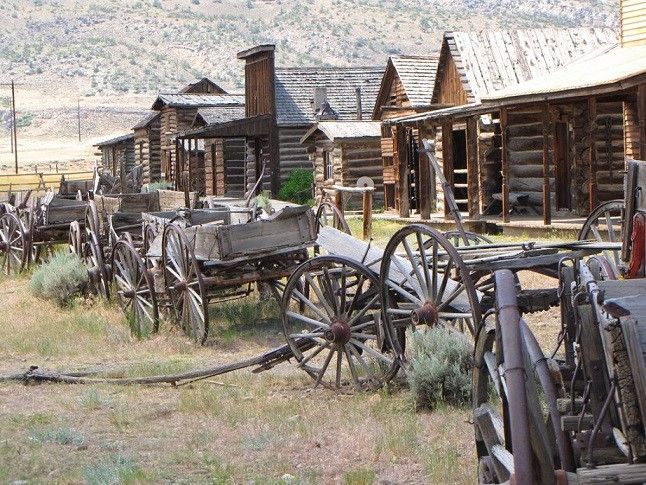
Barracks at the Heart Mountain WWII Interpretive Center. During World War II nearly 14,000 (120,000 total at various camps in the West) Japanese Americans were forced from their homes – primarily in California – and dropped off at what was basically an open field where they lived until the war ended. They were handed materials and tools and told to build the barracks that they called home. The barracks were sold off for $1 each after the war, and many could be found in the region being used as barns, warehouses and outbuildings. Two of the barracks were reclaimed and reconstructed on the site where the original structures sat.
The Chamberlin Inn. Agnes Chamberlin was the owner and proprietress of the Chamberlin Inn, now a centrally located boutique hotel that is a popular gathering place. She opened the hotel as a boardinghouse in 1900 and gradually expanded the building and added touches of luxury. The hotel was the place to be and be seen, and she often hosted high-profile guests like Ernest Hemingway and Marshall Fields. She was a civic leader who founded the Cody Women’s Club and often hosted Cody Club Chamber meetings.
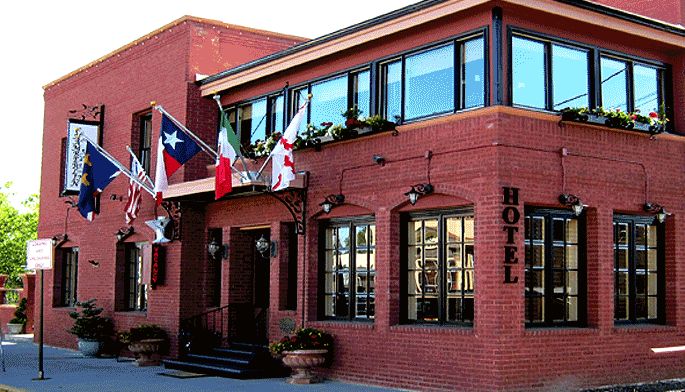
The Irma Hotel. Buffalo Bill Cody opened a hotel on Cody’s main drag of Sheridan Avenue in 1902 and named it after his daughter. The hotel has two sections – the original wing and a newer section as well as a popular restaurant and lounge. In the restaurant, the cherrywood bar was a gift from England’s Queen Victoria to Buffalo Bill.
Roosevelt Lodge. President Theodore Roosevelt loved the West and was a renowned outdoorsman, and he knew Yellowstone National Park well. Built in 1920 near one of Roosevelt’s campsites, Roosevelt Lodge offers rustic cabins, a front porch made for rocking chairs, horse corrals, the popular Old West Dinner cookout and a dining room famous for its baked beans.
Sear Roebuck Houses. Long before Amazon and Home Depot were selling tiny home kits, Sears Roebuck was selling houses through its catalogs. Cody has some excellent examples that are on the tours offered by Cody Trolley Tours.
Cassie’s Supper Club. Widowed at a young age,Cassie Waters founded in 1912 one of the town’s most successful houses of prostitution. She became known as a generous civic leader who often was among the first in line when contributions were needed for schools or charitable organizations. Although she complied when townspeople pressured her to move her bustling business to the outskirts of town, she continued to support the town in numerous ways until her death. Cassie’s Supper Club remains a popular destination for dining and dancing.
The Cowboy Bar & Café. Located in Meeteetse and in business since the 1890s, the Cowboy Bar has seen its share of outlaws and has the bullet holes in the walls to prove it. Butch Cassidy was a regular patron and was arrested once as he walked out of the bar. Amelia Earhart drank there in 1934 while staying at a local guest ranch. More recently, an escaped prisoner from Arizona spent two evenings soaking up as many local stories as he could shortly before he was recaptured.
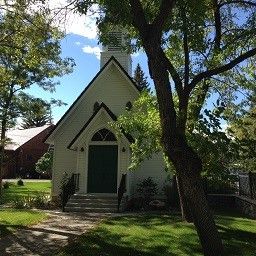 The Poker Church. About the last thing you might expect from a group of raucous men playing poker in Cody in 1902 would be for them all to pledge that the winner of the game would put all of his winnings towards the church of his choice. But these men had wives who wanted more churches in the burgeoning town. When Buffalo Bill’s friend George Beck won the game, he pledged his winnings to build the Christ Episcopal Church, which locals know fondly as simply the “Poker Church.”
The Poker Church. About the last thing you might expect from a group of raucous men playing poker in Cody in 1902 would be for them all to pledge that the winner of the game would put all of his winnings towards the church of his choice. But these men had wives who wanted more churches in the burgeoning town. When Buffalo Bill’s friend George Beck won the game, he pledged his winnings to build the Christ Episcopal Church, which locals know fondly as simply the “Poker Church.”
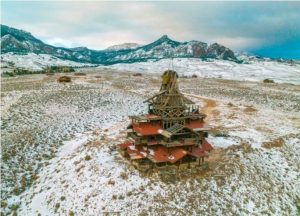 The Smith Mansion. Drivers heading west on the Buffalo Bill Scenic Byway through the Wapiti Valley see a five-story log structure with seemingly random features, protruding staircases and questionable balconies. Known as the “Smith Mansion,” the “Crazy House” and the “Pagoda House,” the building was the home and brainchild of a man named Lee Smith who began building in the early 1980s. Smith and his family lived there for several years, but it is now uninhabited. Unfortunately, Smith died when he fell from either the roof or upper floors on a windy day in 1992.
The Smith Mansion. Drivers heading west on the Buffalo Bill Scenic Byway through the Wapiti Valley see a five-story log structure with seemingly random features, protruding staircases and questionable balconies. Known as the “Smith Mansion,” the “Crazy House” and the “Pagoda House,” the building was the home and brainchild of a man named Lee Smith who began building in the early 1980s. Smith and his family lived there for several years, but it is now uninhabited. Unfortunately, Smith died when he fell from either the roof or upper floors on a windy day in 1992.
 Extended Weekend Getaways
Extended Weekend Getaways